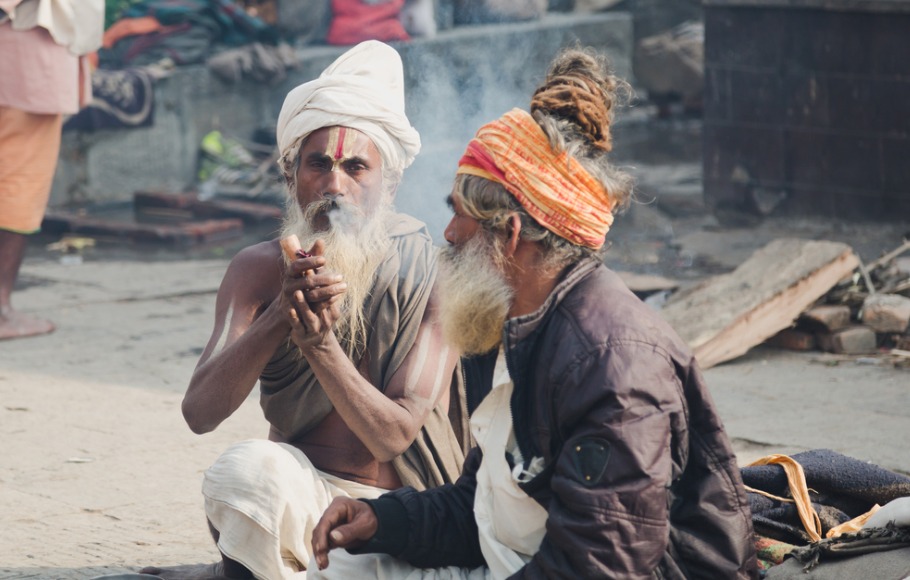
Why 'monkey see, monkey do' is not right for millennials following Shiva
With Maha Shivaratri descending on us, devotees all over the world prepare fervently to celebrate the holy day. While some believe the day to be auspicious due to the alliance of the Hindu God Shiva and his consort Goddess Parvati, others believe this was the day when Shiva presented himself in the form of Jyotirlinga — that neither has a beginning nor an end.

With Maha Shivaratri descending on us, devotees all over the world prepare fervently to celebrate the holy day. While some believe the day to be auspicious due to the alliance of the Hindu God Shiva and his consort Goddess Parvati, others believe this was the day when Shiva presented himself in the form of Jyotirlinga — that neither has a beginning nor an end.
Shiva enjoys quite a reputation in Indian mythology and commands a sect of his own known as the Shaivites.
In popular culture too, Shiva has captured the attention of Gen X, with comics, novels, television shows and movies hooking the audiences.
However, Bholenath, a name given to him for his gullible quality, enjoys a stature way different from other Hindu gods, especially for his association with psychedelic drugs.
Owing to his this reputation, he has found an unparalleled fan following across the world.
Noticeably, over the years, he has also become the face of trance music and has found a revered spot in EDM (Electronic Dance Music) scene after the global hippie movement. It was also the time when the humble sitar made an appearance on rock classics such as Paint it Black, followed by The Beatles’ visit to Rishikesh, now in Uttarakhand.
The portrayal and adaptation of an inexhaustible supply of colourful imagery of the deity has led to the widespread use of his likeness toward psychedelic album art and festival flyers, promoting Shiva’s status as an EDM icon.
Related news: Marijuana can be effective in treating pain, insomnia: Study
However, unfortunately, the image of a well-built, intoxicated Shiva enjoying a smoke in solidarity, as a hippie with long matted hair, thick beard and moustache does little to propagate the larger meaning behind his spirit — the spirit that advocates the bending of the mind toward a greater understanding of harmony and existence.
Nescient people try to justify their consumption of marijuana by citing Shiva but they fail to understand the ethos of the practice.
According to Bhagwat Purana or Vishnu Purana (a book that talks extensively about Lord Vishnu), when Samudramanthan (churning of the sea) was happening, a poison called Halahala came out of the ocean and began heating up the universe. Since both the gods and demons did not know what to do with it, Shiva came forward and ingested the poison, holding it in his throat, which in turn made him very restless.
To calm him, the gods gave him bhang (marijuana) to cool his throat.
It is because he holds Halahala in his throat, he is given the moniker Neelkantha, one with a blue throat.
Thereupon, it is established that tranquil-yet-ferocious Rudra (Shiva in anger form) never needed to drag on marijuana for recreational purposes; he did so to save the world from the effects of Halahala.
Some tell tales also claim that since Shiva is the supreme energy, he is unaffected by all worldly affairs. The image of him smoking up is only a symbol to present him as the supreme consciousness and that nothing can affect him. He lives in constant bliss.
This is also the belief that aghori babas live by. The aghoris, often seen indulging in unorthodox Hindu practices such as living in cremation grounds, giving up clothes, eating flesh, believe that Shiva is everywhere and in everything. That Shiva is the cause and the effect.
Unlike now, when primarily used for its psychedelic effects, marijuana in India enjoyed a reputation as a medicinal plant to be used in moderation during the Vedic periods.
Atharva Veda even termed cannabis one of the five most sacred plants of the world and ancient Indian scriptures also called ‘bhang’ as Vijaya. It has since been considered a medicine that controls anxiety and was cultivated for its fibre.
Because of this, the usage of cannabis is rampant in Hindu culture on many religious occasions, especially in association to Lord Shiva.
Related news: Substance abuse: How patriarchy is stopping women from getting help
It is also believed that one can offer bhang (marijuana), datura (devil’s trumpets), tambul prasad (betel leaves) as prasad to Shankar (another name of Shiva) and pray for prosperity. His association with intoxication has also earned him the name Soma.
Millennials cite Shiva’s relationship with cannabis as the moral justification of their own narcotic use, however, what they are actually doing is, monkey see, monkey do. Instead, in an ideal world, people would emulate his simple lifestyle, yogic sadhna, passionate dancing and dedicated family life.


